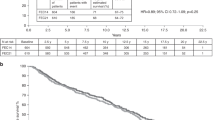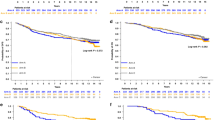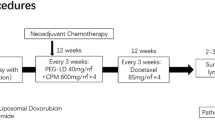Abstract
Dosage recommendations for cyclophosphamide therapy are examined in the light of an accumulated experience that this agent provides a useful palliation in 25% to 35% of patients with advanced breast cancer. It is concluded that an attempt to press dosage to the extreme limits of marrow tolerance does not significantly increase the likelihood of obtaining palliation, while posing a danger to the patient's life.
It is also concluded that continuous low dosage schedules appear to achieve a similar incidence of tumour palliation to that from intermittent high dosage of cyclophosphamide. The latter schedule has the disadvantage of a considerably higher incidence of side effects, such as loss of scalp hair, nausea, cystitis and haemopoietic damage. Intensive dosage may however be more efficacious in the occasional case involving urgent management of a localized rapidly growing tumour. Consideration is given to other factors which may affect the degree and duration of palliation by cyclophosphamide, and to measures claimed to decrease the degree of toxicity.
This is a preview of subscription content, access via your institution
Access options
Subscribe to this journal
Receive 24 print issues and online access
$259.00 per year
only $10.79 per issue
Buy this article
- Purchase on Springer Link
- Instant access to full article PDF
Prices may be subject to local taxes which are calculated during checkout
Similar content being viewed by others
Rights and permissions
About this article
Cite this article
Stoll, B. Evaluation of Cyclophosphamide Dosage Schedules in Breast Cancer. Br J Cancer 24, 475–483 (1970). https://doi.org/10.1038/bjc.1970.57
Issue Date:
DOI: https://doi.org/10.1038/bjc.1970.57
This article is cited by
-
Heat shock proteins and drug resistance
Breast Cancer Research and Treatment (1994)
-
Selecting dose-intense drug combinations: metastatic breast cancer
Breast Cancer Research and Treatment (1991)
-
Chemotherapy of breast cancer
Medical Oncology and Tumor Pharmacotherapy (1984)



